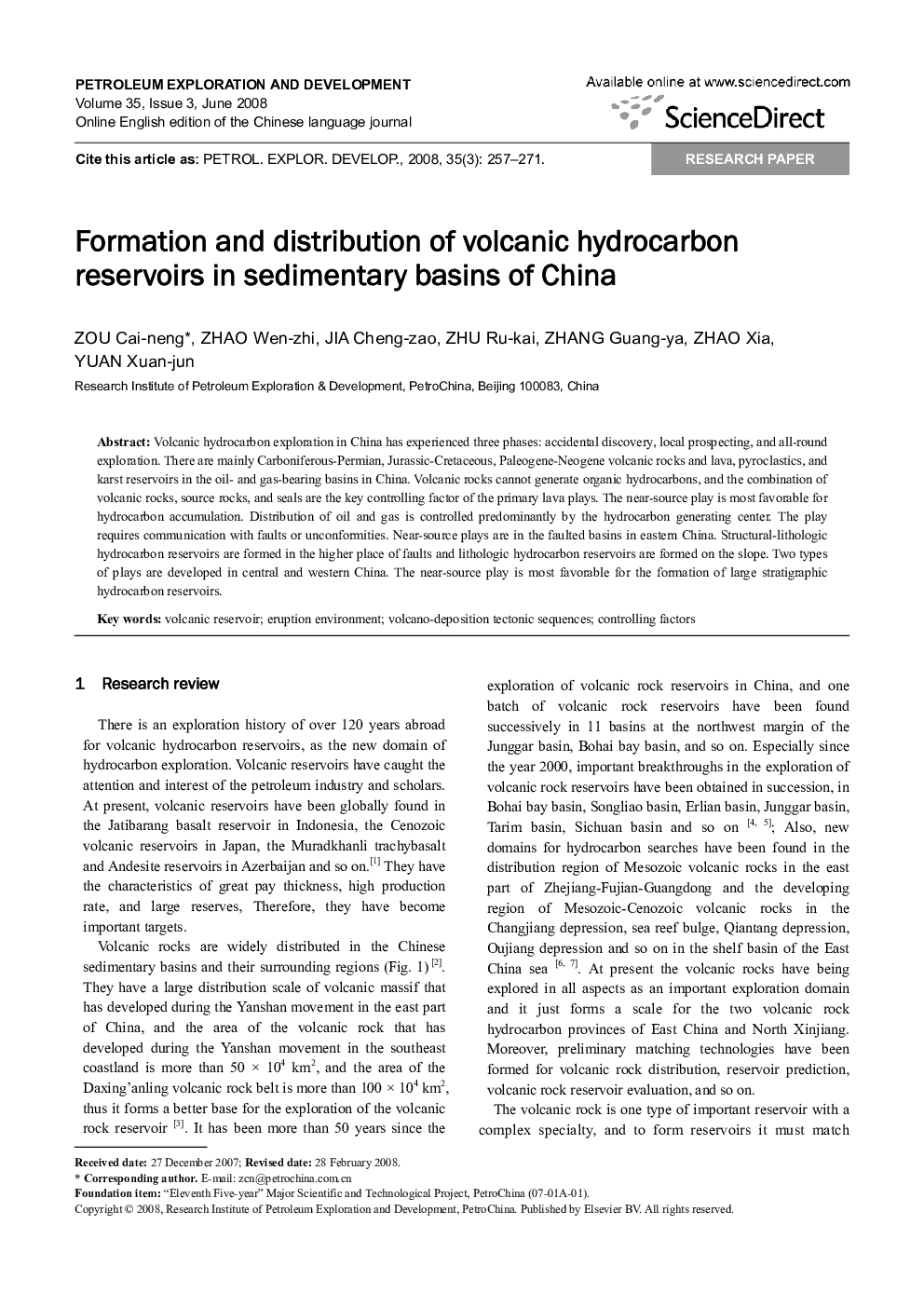| Article ID | Journal | Published Year | Pages | File Type |
|---|---|---|---|---|
| 4720621 | Petroleum Exploration and Development | 2008 | 15 Pages |
Volcanic hydrocarbon exploration in China has experienced three phases: accidental discovery, local prospecting, and all-round exploration. There are mainly Carboniferous-Permian, Jurassic-Cretaceous, Paleogene-Neogene volcanic rocks and lava, pyroclastics, and karst reservoirs in the oil- and gas-bearing basins in China. Volcanic rocks cannot generate organic hydrocarbons, and the combination of volcanic rocks, source rocks, and seals are the key controlling factor of the primary lava plays. The near-source play is most favorable for hydrocarbon accumulation. Distribution of oil and gas is controlled predominantly by the hydrocarbon generating center. The play requires communication with faults or unconformities. Near-source plays are in the faulted basins in eastern China. Structural-lithologic hydrocarbon reservoirs are formed in the higher place of faults and lithologic hydrocarbon reservoirs are formed on the slope. Two types of plays are developed in central and western China. The near-source play is most favorable for the formation of large stratigraphic hydrocarbon reservoirs.
